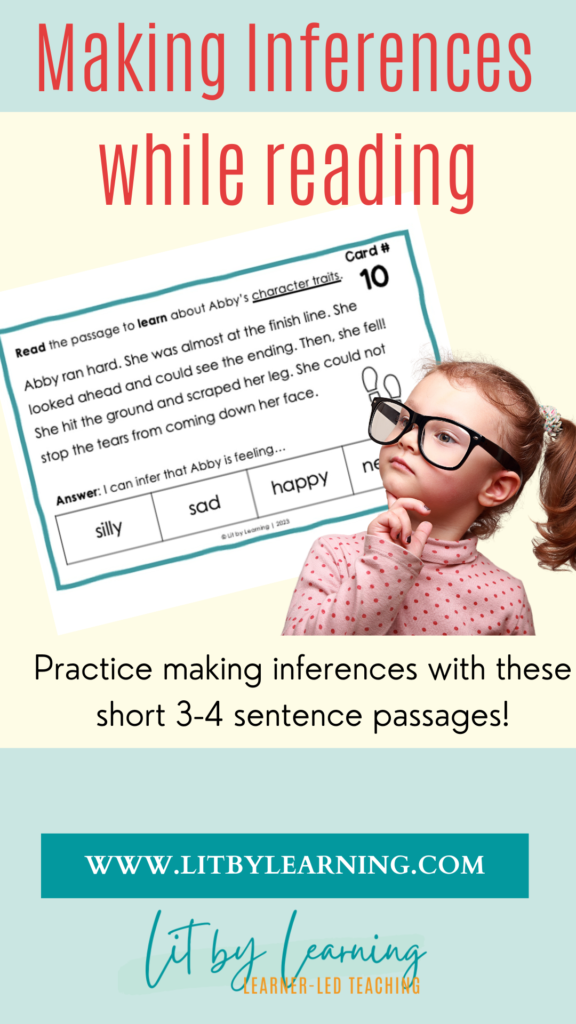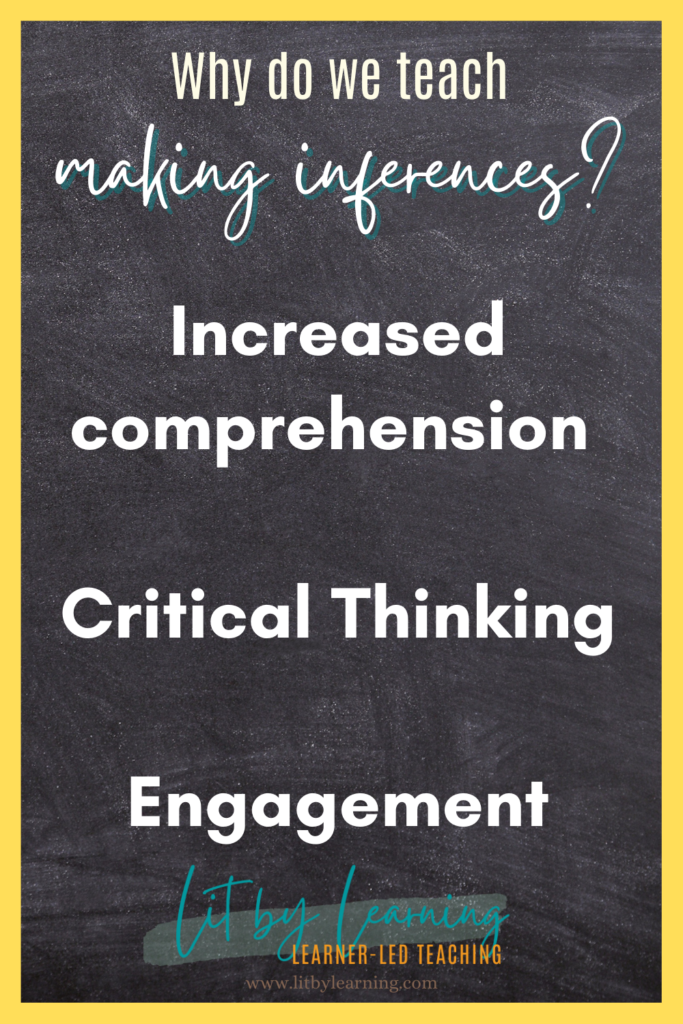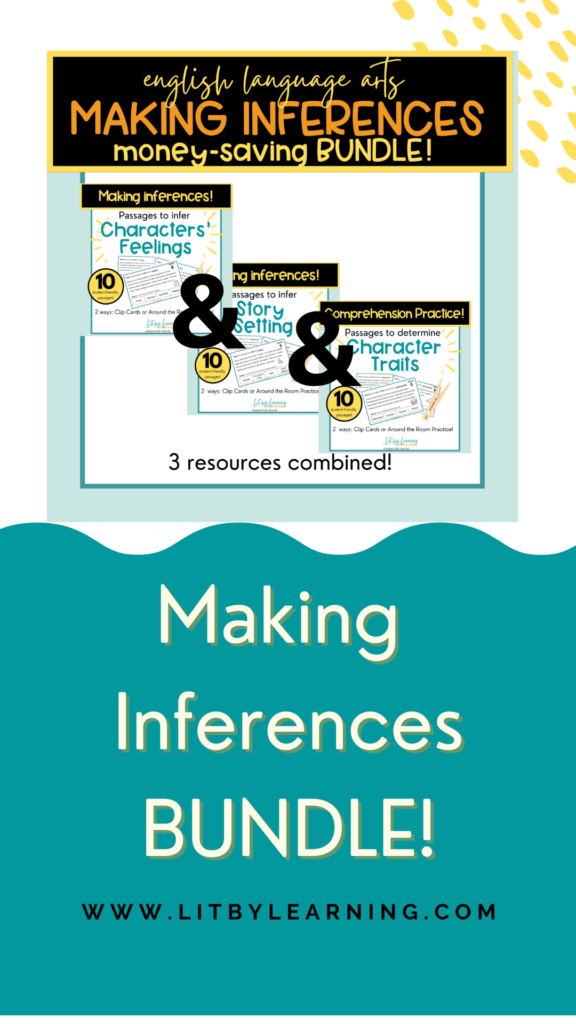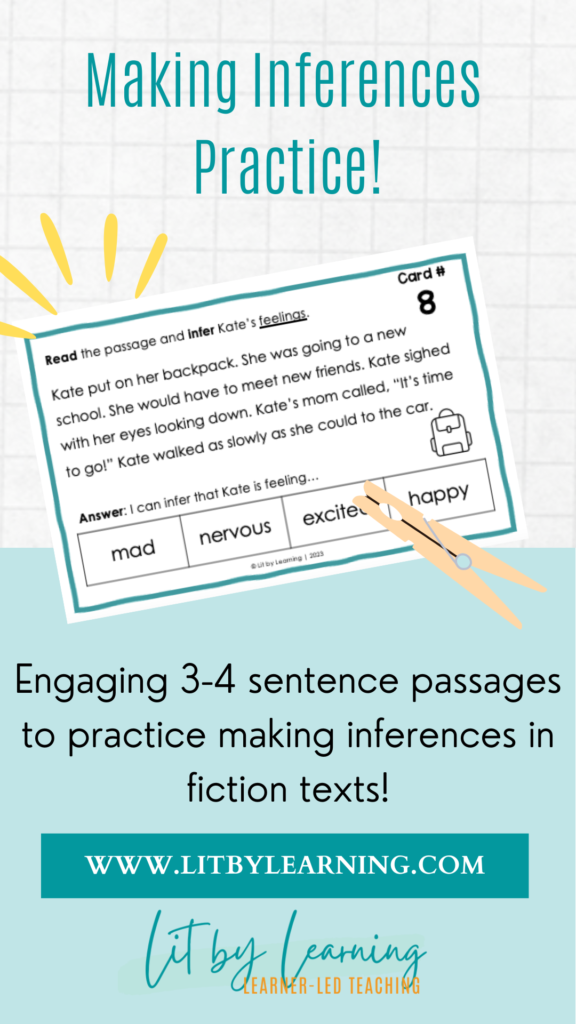Important comprehension skill: make a inference!
As elementary teachers, one of our essential tasks is not just to ensure that our students can read words on a page but also to help them understand and engage with the text at a deeper level. We need to teach them how to make a inference! Making inferences is a critical reading skill that enables students to go beyond the surface of the text and uncover hidden meanings. In this blog post, we will explore what it means to “make inferences” and share effective strategies to teach this vital skill to your elementary students.

What does it mean to make a inference?
Making an inference while reading involves drawing conclusions or making educated guesses based on information that is not explicitly stated in the text. It requires students to use their background knowledge, context clues, and textual evidence to uncover the author’s intended meaning. Inferences add depth to reading comprehension and help students become more critical thinkers.

Why Teach Inference-Making to Elementary Students?
- Improved Comprehension: Teaching students to make inferences enhances their comprehension skills. They learn to dig deeper into the text and extract more meaning from it.
- Critical Thinking: Inference-making encourages students to think critically and analyze information rather than passively reading it.
- Engagement: When students make inferences, reading becomes more interactive and engaging. They become active, thinking participants in the reading process.

Effective Strategies for Teaching Inference-Making
- Start with Concrete Examples: Begin with simple, concrete examples that students can relate to. Use picture books or short passages that contain clear clues for making inferences. Discuss these examples as a class to model the process.
- Teach Context Clues: Help students understand the importance of context clues. Explain how the surrounding words, sentences, and paragraphs can provide valuable information to make inferences. Make sure to include a diversity of texts so students can stretch their inference-making in multiple genres!
- Ask Open-Ended Questions: Encourage students to ask open-ended questions while reading. Questions like, “Why do you think the character did that?” or “What do you think will happen next?” prompt them to think beyond the surface.
- Predictions and Confirmations: Teach students to make predictions based on what they’ve read and then confirm or revise their predictions as they continue reading. This strategy keeps them engaged and actively thinking throughout the reading process.
- Encourage Discussion: Promote classroom discussions where students can share their inferences with peers. Group discussions can lead to a deeper understanding of the text and expose students to different perspectives.

Inference-making like a pro!
Teaching students to make inferences while reading is a crucial step in fostering their reading comprehension and critical thinking skills. By starting with concrete examples, emphasizing context clues, asking open-ended questions, and encouraging discussion, elementary teachers can empower their students to become more engaged and thoughtful readers.
Remember that making inferences is a skill that develops with practice, so be patient and provide plenty of opportunities for your students to explore the depths of the text they encounter. In doing so, you’ll be equipping them with a valuable tool that will serve them well!

Read more from Lit By Learning
- Check out this post about how to build indestructible teacher-parent relationships!
- Read here about how I use Genius Hour in my elementary classroom!
- Head over to this post to go behind the scenes in a student-led conference!


